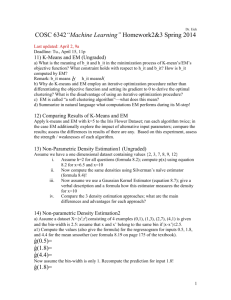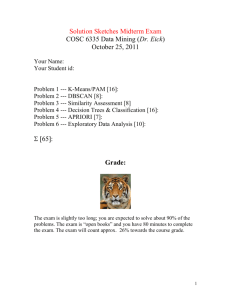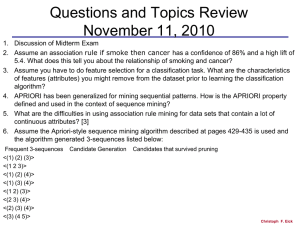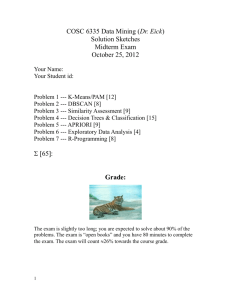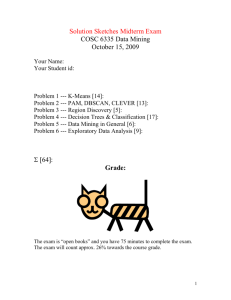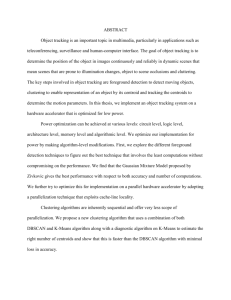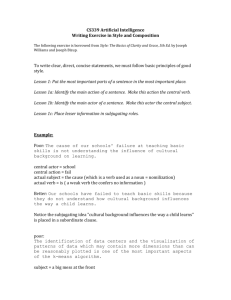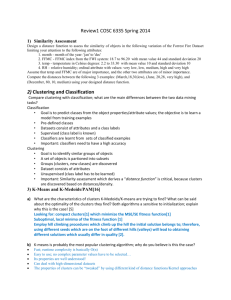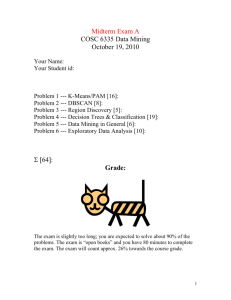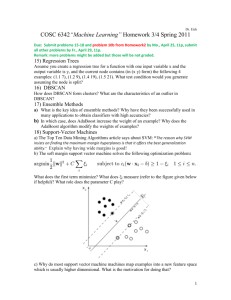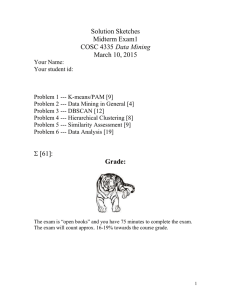home2-13
advertisement
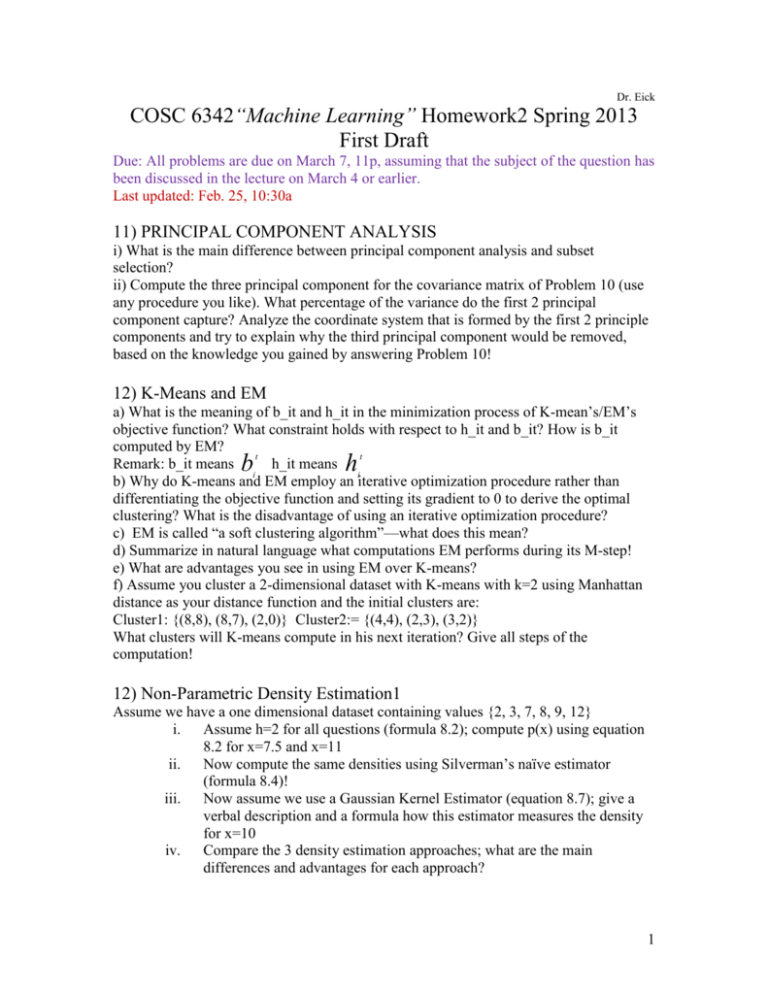
Dr. Eick
COSC 6342“Machine Learning” Homework2 Spring 2013
First Draft
Due: All problems are due on March 7, 11p, assuming that the subject of the question has
been discussed in the lecture on March 4 or earlier.
Last updated: Feb. 25, 10:30a
11) PRINCIPAL COMPONENT ANALYSIS
i) What is the main difference between principal component analysis and subset
selection?
ii) Compute the three principal component for the covariance matrix of Problem 10 (use
any procedure you like). What percentage of the variance do the first 2 principal
component capture? Analyze the coordinate system that is formed by the first 2 principle
components and try to explain why the third principal component would be removed,
based on the knowledge you gained by answering Problem 10!
12) K-Means and EM
a) What is the meaning of b_it and h_it in the minimization process of K-mean’s/EM’s
objective function? What constraint holds with respect to h_it and b_it? How is b_it
computed by EM?
t
t
Remark: b_it means
h_it means
i
i
b) Why do K-means and EM employ an iterative optimization procedure rather than
differentiating the objective function and setting its gradient to 0 to derive the optimal
clustering? What is the disadvantage of using an iterative optimization procedure?
c) EM is called “a soft clustering algorithm”—what does this mean?
d) Summarize in natural language what computations EM performs during its M-step!
e) What are advantages you see in using EM over K-means?
f) Assume you cluster a 2-dimensional dataset with K-means with k=2 using Manhattan
distance as your distance function and the initial clusters are:
Cluster1: {(8,8), (8,7), (2,0)} Cluster2:= {(4,4), (2,3), (3,2)}
What clusters will K-means compute in his next iteration? Give all steps of the
computation!
b
h
12) Non-Parametric Density Estimation1
Assume we have a one dimensional dataset containing values {2, 3, 7, 8, 9, 12}
i.
Assume h=2 for all questions (formula 8.2); compute p(x) using equation
8.2 for x=7.5 and x=11
ii. Now compute the same densities using Silverman’s naïve estimator
(formula 8.4)!
iii. Now assume we use a Gaussian Kernel Estimator (equation 8.7); give a
verbal description and a formula how this estimator measures the density
for x=10
iv.
Compare the 3 density estimation approaches; what are the main
differences and advantages for each approach?
1
13) Non-parametric Density Estimation2
a) Assume a dataset X={xt,rt}consisting of 4 examples (0,1), (1,3), (2,7),(4,1) is given
and the bin-width is 2.5: assume that x and x’ belong to the same bin if |x-x’|2.5.
a1) Compute the values (also give the formula) for the regressogram for inputs 0.2, 1.7,
and 4.6 for the mean smoother (see formula 8.19 on page 175 of the textbook).
ĝ(0.2)=
ĝ(1.7)=
ĝ(4.2)=
Now assume the bin-width is only 1. Recompute the prediction for input 1.7!
ĝ(1.7)=
a2) In general the function obtained using the above approach has discontinuities. What
could be done to obtain a continuous function?
b) What is the main difference between the Gaussian Kernel Density function approach
as described in Section 8.2.2 of the textbook and the k-nearest Neighbor Density
Estimator that has been described in Section 8.2.3?
c) What advantages you see in using non-parametric density estimation approach
compared to parametric density approaches, such as multivariate Gaussians? [3]
14) DBSCAN
a) How does DBSCAN form clusters?
b) What is a border point when using DBSCAN?
2
